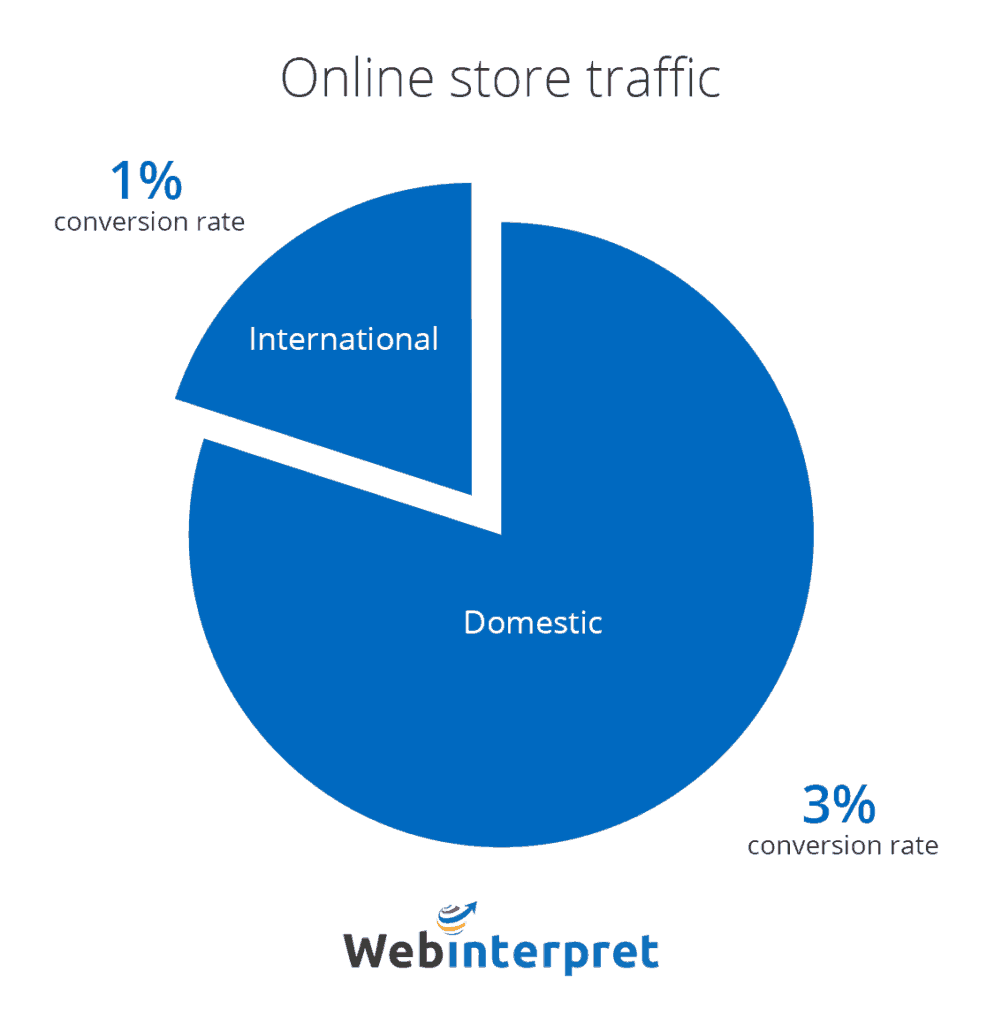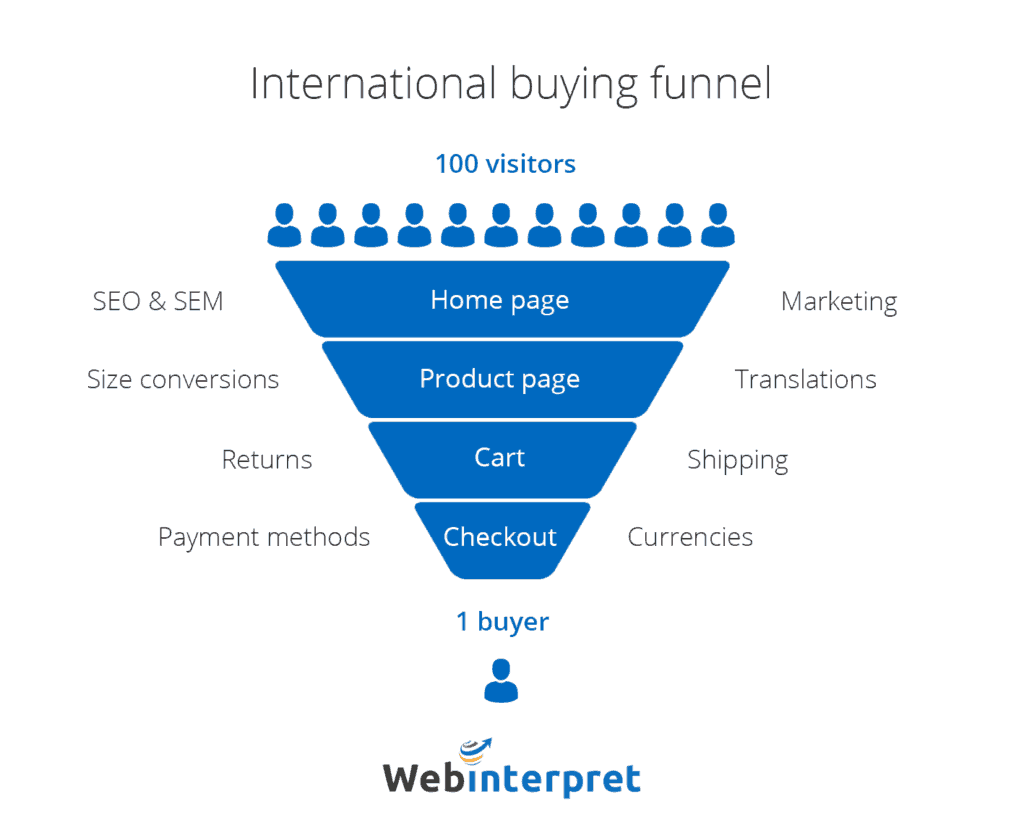
Fitch Richardson, product marketing manager, Webinterpret
International ecommerce is the biggest growth opportunity for online merchants today. Few growth strategies could potentially double or triple the size of your business. You only need look to British online retail success stories, such as ASOS, to see how a properly implemented international strategy can transform your business. Today ASOS, a web-only apparel retailer based in the United Kingdom, says it receives 57% of its orders from abroad. Brands, like ASOS, have capitalized on this opportunity through providing their international buyers with a fully localized, end-to-end shopping experience.
So why aren’t more retailers doing this? In short, because it’s complicated. In order to provide a fully localized experience, you need to consider a whole raft of topics ranging from language and currency at one end, through to tax, import duty, legal issues, and all the way through to marketing, customer service, payments, shipping and so much more. The mistake, however, is to think that you have to localize all these components from day one.
What is lean localization
Lean localization is an agile and iterative approach to localization that helps identify the quickest and most effective ways to start converting international buyers.
Opportunity cost
Trying to localize your entire offering from day one, is a well-intentioned ambition, but it’s a high-risk approach that has a very real opportunity cost associated with it.
I’ve spoken to retailers who say, “International is strategically really important for our business. It’s on our roadmap, and in 18 months to 2 years, we hope to be in a position to start deploying localized versions of our store.”
Wow, really? That will be 18 months to 2 years, where you make no sales in that market, 18 months to 2 years, where you gain no visibility and 18 months to 2 years where your competitors get a crucial foothold and advantage.
Reduce your risk
Instead, lean localization, offers a low-risk approach that you can embark upon immediately. The approach consists of 3 steps:
Validate → Get traction → Optimize
Much of agile and lean methodology revolves around the idea of identifying the minimum actions required to validate an opportunity. Lean localization applies the same concept to international expansion. Identify the minimum set of actions required to validate a market. If you succeed and begin to gain traction, then build a business case, and invest further.
In some markets your business will flourish and grow, but in others, it simply won’t get off the ground at all. And it’s often difficult to predict which markets these will be until you’ve started trading in them. Therefore, don’t invest heavily into a specific market before you’ve validated the opportunity.
Start with what you have.
Many online stores already receive 10%-20% of their traffic from abroad. This international traffic, however, tends to have a much lower conversion rate than the store’s domestic traffic. It’s a trend that we see even in markets that share the same language. For example, UK retailers receive organic search traffic from the US and Australia, and although they share the same language, the traffic still converts at a much lower rate. This is because many components of localization, beyond language, have yet to be optimized.


At the top of the funnel above we have 100 international visitors. As they progress through the funnel, we lose visitors, until, finally, we have just one order. Changes made to the bottom of the funnel, i.e. the final stages of the buying process (cart & checkout) can have a huge impact on the overall performance of the funnel. For example, a common reasons why merchants lose international sales in the checkout is because they don’t support multiple currencies. If, by supporting an additional currency, you can generate 2 orders, rather than 1. You’ve had the same impact, as if you’d doubled your entire marketing budget and put 200 visitors in at the top of the funnel.
Prioritization
Mapping localization components to the buying funnel, will help you identify which components are likely to have the greatest impact on your conversion rate. Working up from the bottom is the most prudent way to improve the performance of your funnel. For example, adding additional currencies or more competitive shipping rates in the checkout will have a compound impact on the efficiency of your international marketing. You will see much better return on investment on your marketing, and therefore it makes much more sense, to make changes in the checkout before trying to optimize your marketing.
Conclusion
Start optimizing the shopping experience for your existing international buyers today. Don’t paralyze yourself through trying to solve everything at once (it’s a big topic). Ruthlessly identify the most important areas that you need to improve, to increase the conversion rate of your international traffic. Be pragmatic and data driven in your approach to prioritization and use your buying funnel.
Don’t overly worry about budgetary constraints at this stage: Work with the traffic you have and turn make small, strategic investments into impactful improvements at the bottom of your buying funnel.
One of the simplest changes you can make to massively improve the conversion rate of your international traffic, is to offer competitive international shipping. Again, ASOS, is a great example of successfully employing a good shipping strategy to penetrate and validate international markets. They offered free worldwide shipping, knowing that they were losing money doing so. They had no international fulfilment centers and were fulfilling everything from their central warehouse in Barnsley, in the UK. They chose to absorb this cost, instead treating it as a marketing cost. It enabled them to get massive market penetration and validate the international opportunity.
Once they did that they optimized their operations, with international fulfilment centers. But, crucially at that stage, they had a business case to do so and knew exactly which markets to invest in.
Expand your international business today and use the lean localization principals to reduce your risk and improve your effectiveness using the following 3 steps: Validate → Get traction → Optimize
Webinterpret provides translation and localization services for online retailers in over 60 countries.
Favorite